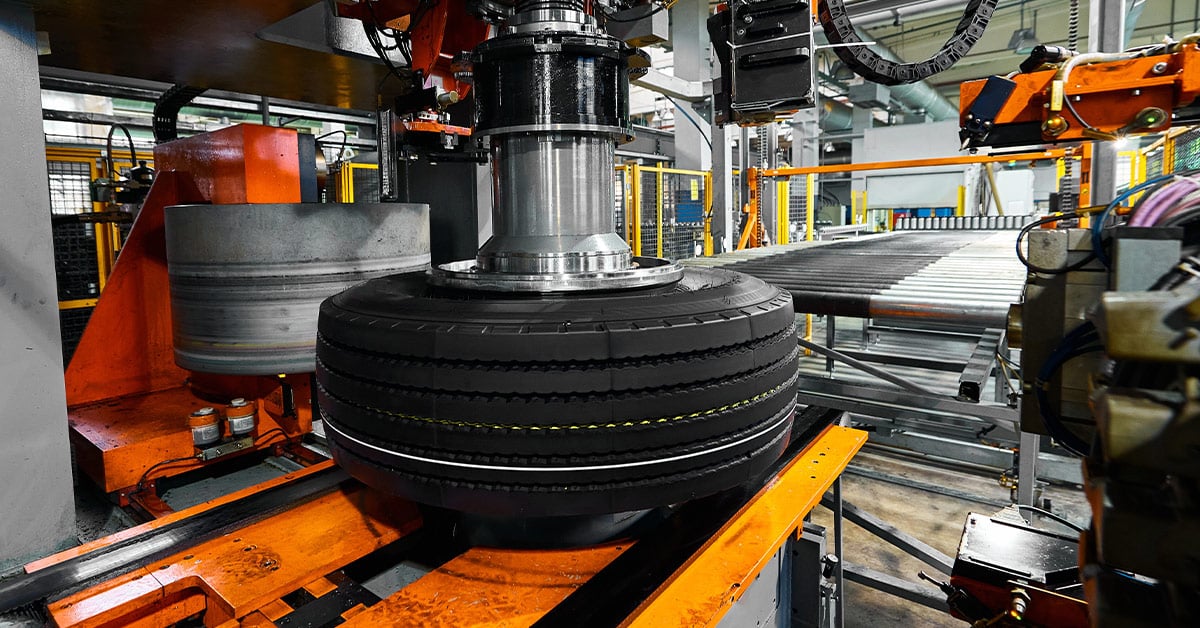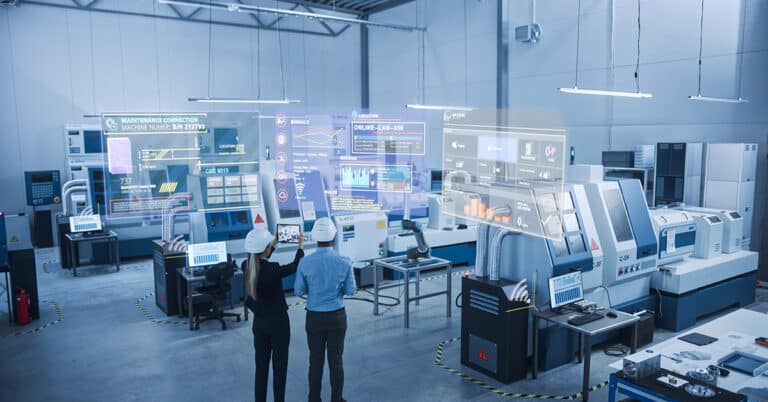In tire manufacturing, quality and consistency are achieved by monitoring and controlling key manufacturing process parameters. What’s more, having instrumented the processes, these tire manufacturing sensors can also support preventive maintenance.
Preventive maintenance reduces breakdowns and extends the life of machinery like mixers, extruders, calenders, tire building machines and curing presses. The problem is that it creates downtime, which eats into OEE.
This blog explores how sensors used in tire manufacturing, and additional sensors specifically for maintenance, can increase maintenance effectiveness and improve metrics such as OEE and MTBF.
The importance of sensors in tire & rubber manufacturing
Process conditions such as temperature and humidity need monitoring and control to achieve consistent product quality. The most widely used rubber manufacturing sensors include:
- Temperature: Industrial temperature sensors, which take many forms, are used to monitor the manufacturing processes and keep rubber properties within acceptable limits.
- Pressure: Forces applied in curing presses need precise measurement. Fluid systems such as those used for heating and cooling also benefit from pressure monitoring. Steam presents a special situation where pressure monitoring needs sensors designed specifically for the application.
- Humidity: Rubber properties, especially tensile strength, are affected by humidity, so in most tire plants this is closely controlled.
- Current draw: This provides a way of measuring the energy consumed by a process such as mixing.
- Vibration: While not directly affecting the production processes, vibration signatures indicate how well or otherwise, rotational equipment like fans and compressors are running.
- Measurement: Non-contact measurement systems monitor and control processes and assembly quality.
Application of condition monitoring sensors in tire & rubber manufacturing
Sensors used for machine or process control can reveal information about equipment condition. This enables predictive maintenance through machine health monitoring. Predictive maintenance is a strategy where sensor data is analyzed to look for signs of deterioration that could lead to inconsistent operation and even breakdown.
A generalized example is a sensor that monitors lubricating oil condition. This is used to schedule an oil change for a convenient time, but before the oil deteriorates to a point where it no longer provides sufficient protection. Additional benefits of avoiding unnecessary or premature oil changes are reduced downtime and material savings.
All the sensing technologies listed above can support condition monitoring in tire and rubber manufacturing. However, temperature plays an outsize role in the manufacturing processes and may offer the biggest opportunity. Examples of tire manufacturing sensors being used for condition monitoring include:
- Monitoring heating and cooling systems: Temperature sensors can detect problems like blocked filters.
- Detecting increased friction: Extrusion is a process where early detection via temperature sensing can help avoid costly downtime.
- Pressure measurement: Can detect early signs of curing system problems, which would result in quality defects.
Quality assurance sensors in tire & rubber manufacturing
Effective process control is an integral part of tire manufacturing, but inspection is widely used too. As rubber has “give,” it’s difficult to get accurate readings with contact systems, so most manufacturers prefer non-contact measurement technologies.
During build, laser systems track the edge position of rubber strips. Laser-based 3D measurement is used to verify accuracy of casing and tread and belt assembly and find height defects like small bulges and dents.
Benefits of using sensors in tire & rubber manufacturing
Sensors that support tire and rubber manufacturing maintenance enable higher OEE. That means increased productivity and capacity. More specifically though, benefits include:
- Increased Mean Time Before Failure (MTBF) because faults are found and corrected before they become major problems
- Maintenance cost savings, by fixing problems before extensive damage is done
- Reduced manufacturing downtime, as only necessary maintenance is done, and at times that minimize disruption
- Lower quality costs, because when processes run with greater stability, less product is outside of acceptable limits
Raising productivity with tire manufacturing sensors
Predictive maintenance improves operational performance, but it needs data from instrumented machines and other production equipment. Much of what’s used in tire manufacturing already has sensors installed, especially various types of temperature sensors. These, especially if supplemented with other sensor technologies, can support machine health monitoring that raises OEE and extends MTBF.
ATS is the leader in industrial maintenance. We use tools such as predictive maintenance to help manufacturers maximize output from their productive assets. Contact us to learn more.


